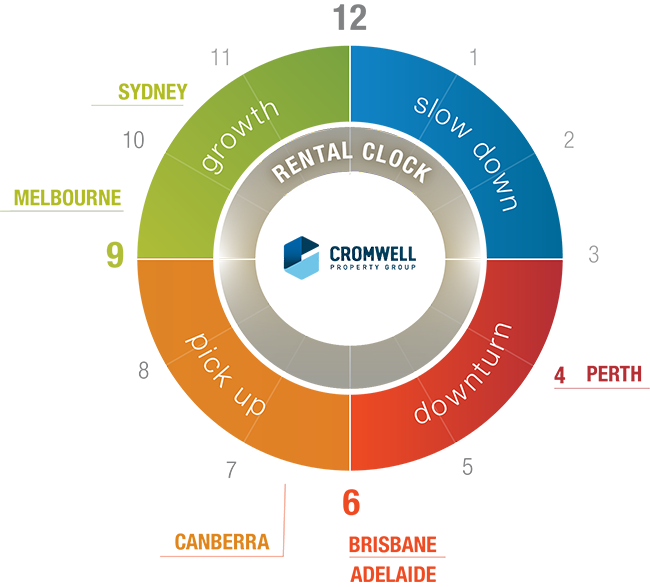Retail property markets
Regional and sub-regional centres
Retail property remains a highly popular investment. The volume of transactions reached record levels over the last few years and only a shortage of regional centres for sale has constrained the market. Some existing owners are instead now ploughing additional capital into centre refurbishment/expansion projects.
Retail yields have firmed aggressively over the last few years and are averaging around that of the last market peak. Yet retailing conditions are not nearly so strong. Growth has been slowing in trend terms since early 2014. While larger retailers and chains are outperforming smaller retailers, there have nonetheless been several high profile failures in the last few months.
The soft economy and weak household income growth will continue to constrain retail expenditure for the rest of this decade. Strong regional differences will emerge as former mining boom areas suffer, while those regions dependent on tourism, education services and other sectors that benefit from a lower Australian dollar enjoy stronger growth.
Shopping centre net operating incomes face further challenges from the poor performance of many anchor tenants and likely pressure on retailer profit margins (and hence their capacity to pay higher rent) from a lower Australian dollar. Changes in tenancy mix, a greater reliance on food and beverage retailers and service sector tenants, and costly upgrades will be required to protect against these threats.
Despite the challenges, centre incomes are, to a great extent, protected by anchor tenant rent and rents from non-expiring specialties on fixed annual escalations. Yields could remain low for some time but they will eventually follow bond rates up.
Large format retail
The large format retail property sector enjoyed another strong year in 2016 across a range of indicators. Strong demand from both consumers and retailers helped to push vacancy rates lower, in turn encouraging rental growth. Meanwhile, the investment market is buoyant.
However, the surge in consumer spending is now past and activity is at more moderate levels. This comes at a time when supply of centres is likely to surge after seven weak years. Reconfiguration of ex-Masters stores into centres could add up to 700,000 square metres of ‘new’ centre floor-space. Moreover, there are also 21 development sites to be accounted for.
Smaller existing centres and strip shopping locations are likely to be the main losers to the ‘new’ ex-Masters centres. Larger, dominant centres are unlikely to suffer as much. Bunnings is a clear winner in the whole process, with a major competitor gone and a great opportunity to pick up new sites easily.
Longer term, the outperformance of larger retailers and chains is expected to continue. Even so, it will be no match for the pace of growth in the 2000s.
On the investment side, demand remains strong. A record dollar value of transactions was achieved in 2015–16. The strength of investor demand has pushed down yields with further yield firming likely over the next 12 to 18 months. Rising bond rates, already putting upwards pressure on yields, will win out after that. Prime values are likely to stagnate rather than fall, but secondary centres could see a drop in prices.
Retail looks reasonably valued, with expected returns around current investment hurdle rates. Even so, retailing and retail property face major challenges. Large format retail has the best estimated return, reflecting its higher yield. Its low rent and expansion opportunities will help it to absorb the Masters properties and secure the longer term strength of the sector, but in the short term there are risks from the amount of reconfigured Masters floor-space likely to come on to the market.



